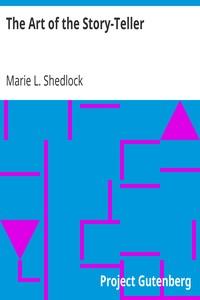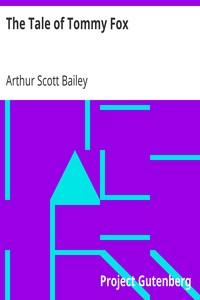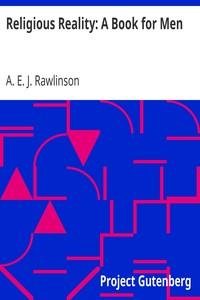Read this ebook for free! No credit card needed, absolutely nothing to pay.
Words: 70683 in 33 pages
This is an ebook sharing website. You can read the uploaded ebooks for free here. No credit cards needed, nothing to pay. If you want to own a digital copy of the ebook, or want to read offline with your favorite ebook-reader, then you can choose to buy and download the ebook.


: The Art of the Story-Teller by Shedlock Marie L - Storytelling; Children Books and reading; Children's literature Bibliography; Children's stories Bibliography
CHAPTER.
THREE STORIES FROM HANS CHRISTIAN ANDERSEN. THE SWINEHERD. THE NIGHTINGALE. THE PRINCESS AND THE PEA.
INTRODUCTION.
Story-telling is almost the oldest art in the world--the first conscious form of literary communication. In the East it still survives, and it is not an uncommon thing to see a crowd at a street corner held by the simple narration of a story. There are signs in the West of a growing interest in this ancient art, and we may yet live to see the renaissance of the troubadours and the minstrels whose appeal will then rival that of the mob orator or itinerant politician. One of the surest signs of a belief in the educational power of the story is its introduction into the curriculum of the training-college and the classes of the elementary and secondary schools. It is just at the time when the imagination is most keen, the mind being unhampered by accumulation of facts, that stories appeal most vividly and are retained for all time.
It is to be hoped that some day stories will be told to school groups only by experts who have devoted special time and preparation to the art of telling them. It is a great fallacy to suppose that the systematic study of story-telling destroys the spontaneity of narrative. After a long experience, I find the exact converse to be true, namely, that it is only when one has overcome the mechanical difficulties that one can "let one's self go" in the dramatic interest of the story.
And as in the case of the two nightingales, so it is with the stilted reciter and the simple narrator: one is busy displaying the machinery, showing "how the tunes go"; the other is anxious to conceal the art. Simplicity should be the keynote of story-telling, but it is a simplicity which comes after much training in self-control, and much hard work in overcoming the difficulties which beset the presentation.
But there came to me suddenly one day the remembrance of a scene from Racine's "Plaideurs," in which the counsel for the defence, eager to show how fundamental his knowledge, begins his speech: "Before the Creation of the World"--And the Judge suggests:
"Let us pass on to the Deluge."
And thus I, too, have passed on to the Deluge. I have abandoned an account of the origin and past of stories which at best would only have displayed a little recently acquired book knowledge. When I thought of the number of scholars who could treat this part of the question infinitely better than myself, I realized how much wiser it would be--though the task is more humdrum--to deal with the present possibilities of story-telling for our generation of parents and teachers.
My objects in urging the use of stories in the education of children are at least fivefold:
First, to give them dramatic joy, for which they have a natural craving; to develop a sense of humor, which is really a sense of proportion; to correct certain tendencies by showing the consequences in the career of the hero in the story ; to present by means of example, not precept, such ideals as will sooner or later be translated into action; and finally, to develop the imagination, which really includes all the other points.
But the art of story-telling appeals not only to the educational world and to parents as parents, but also to a wider public interested in the subject from a purely human point of view.
Free books android app tbrJar TBR JAR Read Free books online gutenberg
More posts by @FreeBooks

: The Tale of Tommy Fox by Bailey Arthur Scott - Animals Juvenile fiction; Conduct of life Juvenile fiction; Children Conduct of life Juvenile fiction; Siblings Juvenile fiction; Foxes Juvenile fiction; Parent and child Juvenile fiction; Wild animals as pets


: Religious Reality: A Book for Men by Rawlinson A E J Alfred Edward John - Theology Doctrinal Popular works






